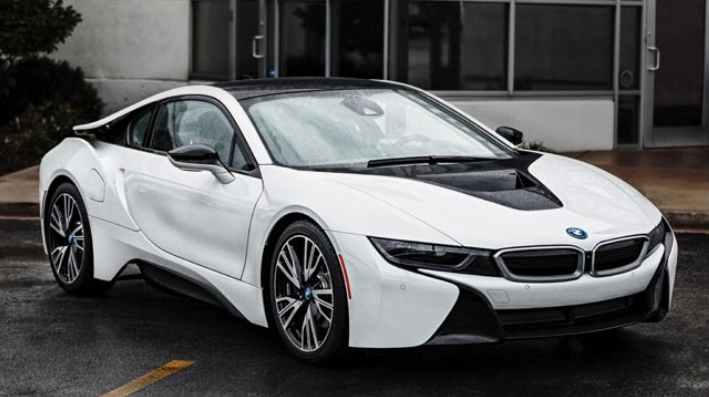City driving presents unique challenges. Traffic congestion, narrow streets, and limited parking spaces can turn daily commuting into a stressful experience. Choosing the right vehicle for urban environments requires careful consideration of both performance and design. While many drivers focus solely on looks or engine power, the combination of the two can significantly improve safety, efficiency, and overall driving satisfaction. This guide explores why performance and design matter in city vehicles and how they impact the urban driving experience.
The Importance of Performance in City Driving
Performance is a critical factor in urban vehicles. Maneuverability, responsive handling, and reliable brakes are essential when navigating crowded streets and frequent stops. A vehicle that accelerates smoothly and handles well in tight spaces reduces stress and increases safety for both the driver and surrounding pedestrians.
For drivers who prioritize both luxury and efficiency, models like habberstad BMW cars offer a perfect blend of powerful engines and nimble handling. These vehicles are engineered to provide responsive driving dynamics without compromising fuel efficiency, making them ideal for stop-and-go traffic and frequent city commutes.
Urban environments demand vehicles with dependable braking systems and engines that withstand frequent starts and stops. Performance-oriented cars ensure that drivers can confidently navigate intersections, merge into heavy traffic, and react quickly to sudden changes, all while maintaining optimal fuel economy.
The Role of Design in Urban Vehicles
Design is more than just aesthetics; it plays a practical role in city driving. Compact exterior dimensions make parking and maneuvering through congested streets easier, while aerodynamically optimized shapes can improve fuel efficiency and reduce drag.
Inside the vehicle, interior design influences comfort, visibility, and accessibility. Ergonomic seats, intuitive dashboards, and well-placed controls allow drivers to focus on the road, reducing fatigue and improving safety during long commutes. Advanced technology integration, such as infotainment systems, navigation aids, and driver-assist features, further enhances the urban driving experience.
Additionally, stylish design and brand appeal can boost personal satisfaction. A car that looks and feels premium adds enjoyment to daily driving, creating a sense of pride and confidence. Well-executed design, therefore, merges functionality with visual appeal to optimize city driving.
Combining Performance and Design
When performance and design work together, city driving becomes far more manageable and enjoyable. Aerodynamic designs improve engine efficiency and reduce fuel consumption, while compact yet powerful vehicles make tight urban maneuvers seamless.
Many vehicles that integrate both performance and design excel in urban settings. For example, habberstad BMW cars combine sophisticated engineering with refined aesthetics, offering compact dimensions for city streets without sacrificing luxury or driving dynamics. This synergy allows drivers to enjoy the best of both worlds: efficient, safe commuting with a stylish presence on the road.
By considering both aspects when selecting a vehicle, drivers can ensure that their car is not only practical but also enjoyable to drive. Features like responsive steering, adaptive suspension, and intuitive control layouts enhance performance, while sleek exteriors and comfortable interiors improve the overall driving experience.
Practical Benefits for City Drivers
Vehicles that prioritize performance and design offer several practical advantages for city dwellers. Easier parking, improved lane navigation, and reduced commuting stress are immediate benefits. Additionally, these cars often provide advanced safety systems, lowering the risk of accidents in congested urban areas.
Long-term cost savings also result from efficient engines, durable components, and reduced wear-and-tear. A well-designed vehicle with performance-oriented engineering requires less frequent maintenance and performs reliably over time, reducing both unexpected repairs and routine servicing costs.
For drivers seeking a premium urban experience, models such as habberstad BMW cars demonstrate how combining these features can lead to a more enjoyable, convenient, and safe city driving experience. From daily commutes to weekend trips, the integration of performance and design ensures that drivers can navigate busy streets with confidence and style.
Choosing the Right City Vehicle
When selecting a vehicle for urban driving, consider both engine performance and design features. Evaluate handling, braking, fuel efficiency, and maneuverability alongside interior comfort, visibility, and technology. Test-driving multiple models is crucial to understanding how a car performs in real-world city conditions.
Maintenance and reliability are also key considerations. Regular servicing of a performance-oriented vehicle ensures long-term efficiency and safety, making it a wise investment for city dwellers. By balancing aesthetics, technology, and driving dynamics, urban drivers can select a vehicle that meets both practical and lifestyle needs.
Conclusion
Performance and design are inseparable factors that greatly influence city driving. Vehicles that excel in these areas offer better handling, improved fuel efficiency, enhanced safety, and a more enjoyable urban experience.
Drivers who prioritize both aspects, such as those choosing habberstad BMW cars, benefit from a harmonious blend of engineering excellence and aesthetic appeal. By considering these elements when selecting a city vehicle, drivers can ensure stress-free commutes, safer streets, and a more satisfying driving experience.



